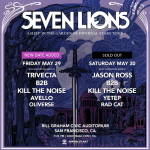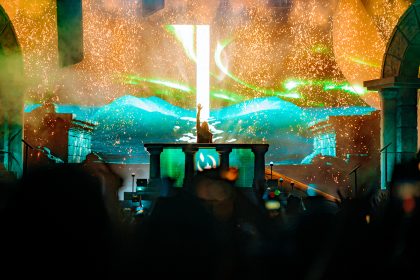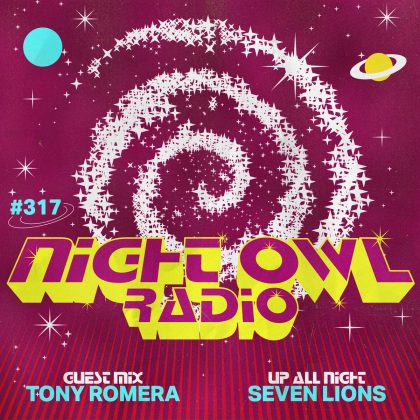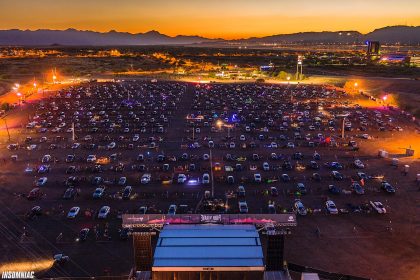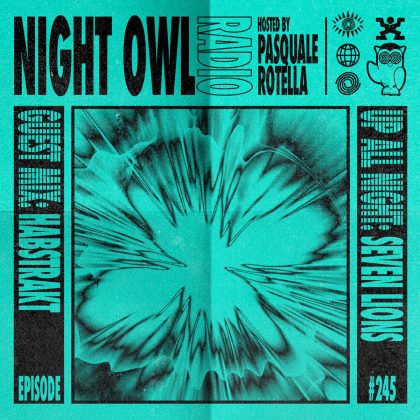Onstage: The Visual Dream Behind Seven Lions’ Journey Tour
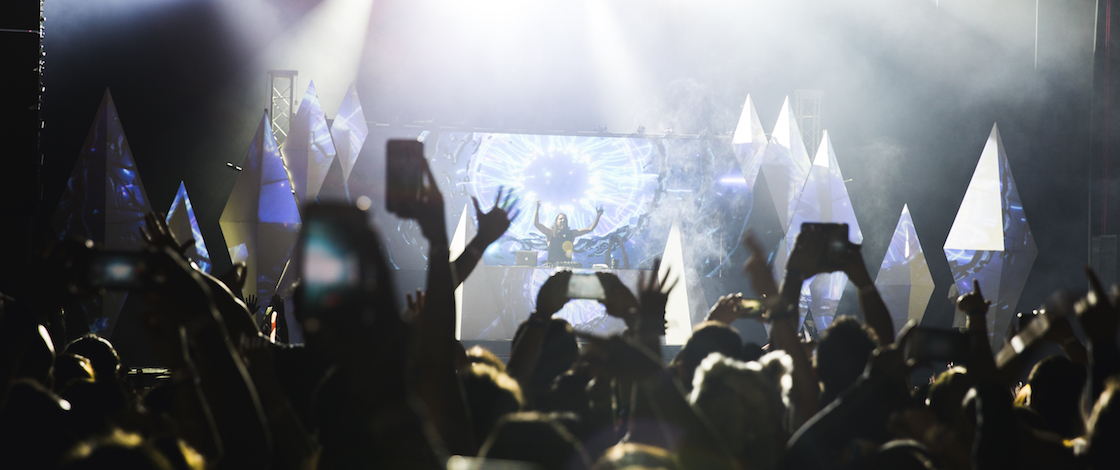
Upcoming Event
The Onstage series takes a deep and detailed look into the jaw-dropping, state-of-the-art stage designs and productions that drive electronic music into the future.
Multi-genre production powerhouse Seven Lions just hit the road this month with a new live tour featuring a truly unique and spectacular stage production. Towering over audiences and spreading wide across a full stage, the show brings fantastical imagination mixed with nature-inspired imagery to life via cutting-edge video mapping and ultramodern technology. Equipped with two large LED video screens, the production is surrounded by multiple beautifully designed, colorful, video-mapped diamonds reflecting vivid images of a fantasyland. All told, the stage creates a flashing experience of sound and vision of dreamlike proportions.

The design behind Seven Lions’ new show is a labor of love, but also of color, image mapping, and highly technical engineering. Lovers of visuals and all things tech behind festival and set stages are sure to geek out at this state-of-the-art, technical behemoth.
To dig deep into this unique production and find out what went into the coinciding multimedia tour, we spoke with Seven Lions himself, Jeff Montalvo; Ian Alvarez, who has been doing visuals for the artist for three years; and Dillon Butz, production designer at BEAMA Visual Environments, who built the stage. San Francisco-based visual artist Noah Freeman also contributed to the main stage design and created all custom content for the tour.
As far as inspiration, Montalvo knew what he wanted in terms of color with his visuals right away, and visual tech Alvarez was able to translate that on previous tours and at festivals. “I think in colors when I’m making the songs, so that’s the way we’ve been going through stuff,” says Montalvo, “picking out the colors that match the content and then going from there.” The visuals also depend on genre. “Ian has the ability to glitch things out and make things look really intense or really pretty. For dubstep stuff, we do really heavy, glitched-out visuals, and for like psytrance, it’ll be more [rainbow-like] fractals.”
.gif)
The next step was to build the stage. While Alvarez had a basic model in mind, he wasn’t sure how to execute it. This is where Butz and his BEAMA team came in. “It was nice that they were already halfway prepared when we started,” said Butz. “I had my designers build like 10 options off of Ian’s model, and he and Jeff picked the one they wanted right away. The challenging part was the time crunch for the build. We did the whole thing—set pieces, mapping, everything—in like three weeks. We literally were just finishing as their tour bus was pulling up.”For Alvarez, it gets more technical from there. He and his team have been evolving the look of the Seven Lions stage show since he started traveling with Montalvo, but with this new tour, they both wanted to step it up. They were both inspired by the fantasy-style vistas on Seven Lions’ album covers, so they decided to actually shoot some footage in various locations around Oregon, where Alvarez went to school.
.gif)
“Part of the reason why we wanted to do it up there was because the landscape fits a very fantasy picture,” says Alvarez. “There are lots of forests and a whole range [of scenery]. We did one shot out on the coast, and then we went up in the mountains, and there was this dead, dry lake [where we shot].” Since Montalvo was going for a fantasy, Game of Thrones–style theme, this area provided a lot of the setting for the visuals Alvarez built.
The other challenge, said Butz, was fitting such an elaborate set into a small bus trailer. “We measured and re-measured for months to make sure everything fit, and even then it was a tight squeeze. I couldn’t afford to lose an inch of space. We also designed the set so that all the pieces fit into each other, like Russian dolls. It actually came together really nicely.”
For the Seven Lions crew, the work of Butz and company proved critical for the ease and success of touring the production around the country. “We basically set up three rigs for different stage sizes,” says Alvarez. “The ‘A’ rig is the full thing, with all the diamond clusters, and then the ‘B’ and ‘C’ rigs take away different modular pieces to fit different stages.” BEAMA’s work on Excision’s Executioner tour paid off here. “We toured almost all the same venues with the Executioner tour,” said Butz, “so we had a lot of the stages pre-mapped, and we could also let Ian and his team know some of the pitfalls of each venue so we could guide them in that way, too.”

With all these elements working together to create the stage show, Montalvo, Alvarez and Butz all agree that what really made the difference for the set and visuals is the D3, a one-of-a-kind server BEAMA put into operation for the Journey Tour. “It’s the most advanced computer system in the world for video mapping,” said Butz. “It has an auto-calibration feature that works off the 3D model of the stage. When they roll it out, they can hit certain edges of the diamonds, and it will auto-map it for them; that speeds the process up.”
Since the design works so well and the D3 cuts down on the busy task of mapping each stage, Alvarez says he’s able to really enjoy working the visuals during the shows, and that’s where he gets to be just as creative as Montalvo. “We’ve been working together now long enough that I have an idea of when he’s going into a new song, especially if it’s one of his songs.” As such, he can then cue content specifically catered for certain songs.
.gif)
“When he goes into a new, different song from another artist and he’s going to change it up,” adds Alvarez, “there’s a little bit more creative license to add different clips or go into some of the motion graphics or effects. Those are the times where I have more creative freedom, and I can go in any direction, too. It’s a matter of how the crowd is feeling, as well. It’s a fun, cool way to go about it, and it really keeps the show fresh and [avoids] being the same every single night.”
With this tour, Alvarez says there are even more opportunities for creativity, and the way he and Butz built the visuals makes that possible. “We ostensibly have two layers of content. The alpha overlay [is] essentially a content piece on a clear background piece, so you can sort of see through it. Another layer underneath that is the more cinematic on the LED board on the background. There are multiple layers of content, [and] a lot of the content is specifically designed for the diamonds, so sometimes we’ll take it down and just have those working, or just the LED board as well.”
With visuals shot, sets built and stages mapped, Butz, Alvarez and Montalvo all agree their collaboration has taken the Seven Lions experience to the next level. With each show, Alvarez and Montalvo are noticing how much the crowd is reacting to the elaborate aesthetic, and they’re excited to keep growing with the production.
The team has already talked about shooting more content and adding pieces to the build for festivals, but for right now, everyone is extremely happy with the end product. With Seven Lions’ extremely loyal following, his fans will no doubt love the new production and visual journey.
Seven Lions presents the sold-out Journey Tour Saturday, October 22, at the Hollywood Palladium in Los Angeles.
Layla Marino has a keen eye for beauty in the world. Follow her on Twitter.
Follow Seven Lions on Facebook | Twitter | SoundCloud


